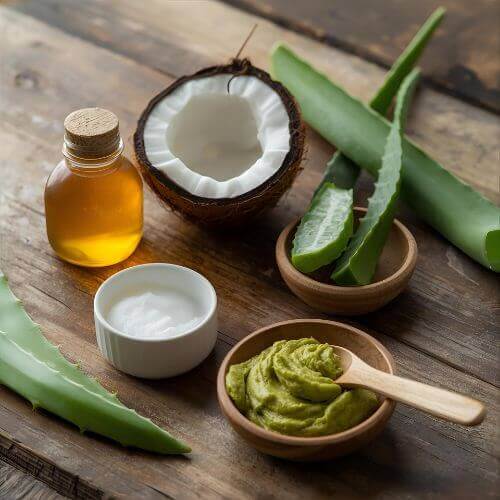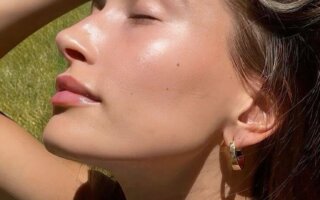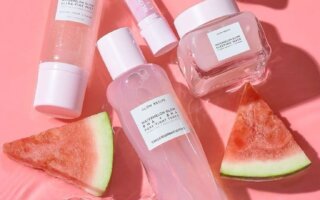Have you ever wondered if a DIY skincare routine could replace your daily regimen of store-bought products? The idea of DIY skincare routines has exploded in popularity in recent years, and for good reason.
Many people are discovering that their kitchen contains some of the most effective, affordable, and natural skincare products available. But with all the DIY skincare hype, the big question remains: Are DIY skincare routines really effective, or should we stick with what we know?
In this blog, we’ll explore the pros and cons of DIY skincare routines, break down the steps to building your own, and help you decide if going homemade is the right choice for you. Spoiler: The answer isn’t as simple as yes or no!
What Are DIY Skincare Routines?
DIY skincare routines involve using natural ingredients—often those found right in your kitchen—to create your skincare products. From cleansers to exfoliators, masks and moisturizers, DIY skincare routines are designed to provide you with customizable, budget-friendly alternatives to store-bought products. You can make masks from honey, cleansers from milk, and exfoliators from coffee grounds—whatever works best for your skin type.
Think of it like cooking your own meals from scratch: you get to choose the ingredients, you know exactly what’s going into the product, and you can cater the routine to your specific needs.
The Pros of DIY Skincare Routines
Before diving into the cons, let’s take a look at why so many people are turning to DIY skincare routines to enhance their beauty rituals:
1. Natural Ingredients
One of the biggest selling points of DIY skincare routines is the use of all-natural ingredients. With no harmful chemicals or additives, DIY routines are a safer, more organic approach to skincare. You can select the ingredients based on your skin type and preferences, ensuring you’re treating your skin with the gentlest yet most effective natural products.
2. Customization
Every person’s skin is different, so why shouldn’t your skincare routine reflect that? With DIY skincare routines, you get complete control over the ingredients. Whether you’re targeting acne, dryness, or signs of aging, you can pick the best ingredients that suit your skin’s needs. For example, aloe vera is fantastic for soothing, while honey provides deep moisture.
3. Cost-Effective
Let’s face it—skincare can get expensive. DIY skincare routines offer a way to save money while still achieving healthy, glowing skin. Ingredients like honey, coconut oil, and yogurt are affordable, easy to find, and often cheaper than store-bought serums and creams.
4. Fun and Therapeutic
There’s something satisfying about mixing your own skincare products, much like crafting a meal from scratch. The process of making your own products can be a fun and therapeutic part of your self-care routine. Plus, it gives you a sense of accomplishment when you see the results.
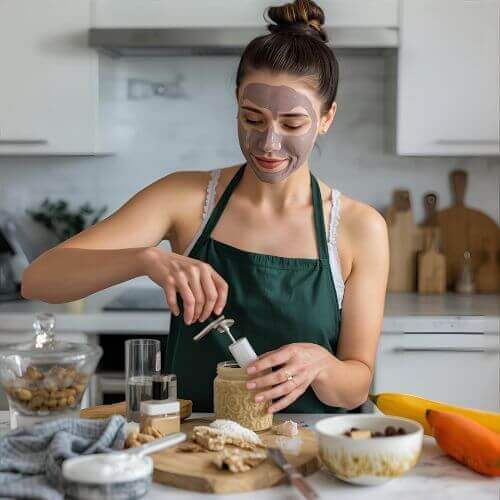
The Cons of DIY Skincare Routines
While DIY skincare routines have many benefits, they’re not without their downsides. Here are a few things to consider before jumping into a homemade skincare routine:
1. Time-Consuming
Preparing your own skincare products can take time, especially if you need to gather ingredients, mix them together, and let them sit. This can be a hassle, particularly on days when you’re rushing. In contrast, store-bought products are ready to use and save you precious time.
2. Risk of Skin Irritation
Just because a product is natural doesn’t mean it’s harmless. Some people may have allergic reactions to certain natural ingredients, even those they’ve never had a problem with before. Lemon juice, for example, is fantastic for brightening the skin, but it can also cause irritation, especially if you have sensitive skin. It’s always a good idea to patch test any new ingredient before applying it to your face.
3. Short Shelf Life
Homemade skincare products often lack the preservatives that commercial products have. This means they have a shorter shelf life and may spoil quickly. Without preservatives, your DIY face mask might last only a few days in the fridge, whereas a store-bought mask could last for months.
4. Not Scientifically Tested
Unlike commercial skincare products, which undergo clinical testing and trials, DIY skincare routines may not have the same proven results. It’s hard to know exactly how effective a DIY treatment is without rigorous scientific testing. While many DIY remedies have worked for centuries, they may not be as reliable as some high-tech skincare products that have undergone safety checks and testing.
How to Create a DIY Skincare Routine
If you’re ready to dive into the world of DIY skincare routines, here’s a simple step-by-step guide on how to build your own:
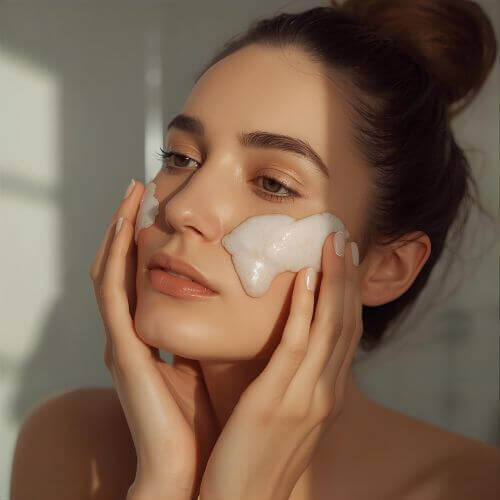
Step 1: Cleanse
The first step in any skincare routine is cleansing. You can make your own homemade cleanser using natural ingredients like:
- Milk: Milk is rich in lactic acid, which helps gently exfoliate the skin. Mix 2 tablespoons of milk with 1 tablespoon of aloe vera or egg for a simple DIY cleanser.
- Green Tea: Green tea is packed with antioxidants and anti-inflammatory properties. Brew a cup, let it cool, and mix with honey for a refreshing morning cleanser.
- Rose Water: Rose water is another classic ingredient known for its cooling and hydrating properties. Simply apply it with a cotton ball for a refreshing cleanse.
Step 2: Exfoliate
Exfoliation helps remove dead skin cells and reveal a brighter complexion. You can exfoliate naturally with:
- Coffee Grounds Scrub: Mix coffee grounds with coconut oil for a gentle, antioxidant-packed scrub that helps improve circulation.
- Sugar and Lemon Scrub: The sugar granules exfoliate, while lemon’s AHA properties help brighten and even out the skin tone.
- Baking Soda: A gentle exfoliant that helps balance your skin’s pH levels, baking soda can be mixed with water to form a paste for a mild scrub.
Step 3: Tone
Toning is important to remove any leftover dirt and oil after cleansing and exfoliating. Some DIY toners include:
- Rice Water: After rinsing rice, the water left behind is full of nutrients that can soothe and tone the skin.
- Apple Cider Vinegar: Mixed with water, apple cider vinegar balances your skin’s pH and has antibacterial properties.
- Aloe Vera Gel: Aloe vera is an excellent toner, hydrating and soothing the skin.
Step 4: Moisturize
A moisturizer is essential for keeping your skin hydrated. You can make your own moisturizer with ingredients like:
- Aloe Vera Gel: Aloe vera is perfect for oily and sensitive skin, providing hydration without clogging pores.
- Coconut Oil and Vitamin E: For dry skin, this combination offers deep moisture and helps restore damaged skin.
- Rose Water and Glycerin: This hydrating mix helps keep your skin soft and smooth.
Step 5: Sunscreen
The one step that can’t be DIY’d is sunscreen. It’s essential to apply sunscreen daily to protect your skin from harmful UV rays. While you can make other skincare products at home, sunscreen requires specific ingredients and formulations to protect your skin from sun damage.
DIY Skincare Routines vs. Commercial Skincare Products: A Quick Comparison
| Aspect | DIY Skincare Routines | Commercial Skincare Products |
|---|---|---|
| Customization | Fully customizable based on your skin’s needs. | Limited customization, one-size-fits-all. |
| Ingredients | Natural, non-toxic, and chemical-free. | Often contains preservatives and chemicals. |
| Cost | Affordable, as ingredients are usually found at home. | Can be expensive due to research, branding, and packaging. |
| Time & Effort | Time-consuming to prepare, especially for daily use. | Quick and convenient, ready-to-use. |
| Effectiveness | Can be effective for some skin types but may lack scientific backing. | Rigorously tested for safety and efficacy. |
| Safety | Potential for allergic reactions or irritation if ingredients aren’t tested. | Tested for safety, but may contain irritants for some. |
| Shelf Life | Short shelf life, especially without preservatives. | Longer shelf life due to preservatives. |
| Environmental Impact | Eco-friendly with minimal packaging. | Packaging can contribute to plastic waste. |
FAQs on DIY Skincare Routines
Are DIY skincare routines safe for all skin types?
Yes, but it depends on the ingredients you choose. Always do a patch test before applying new DIY products to your face to avoid any allergic reactions.
Can DIY skincare routines replace my daily routine?
It can replace certain products like masks, exfoliators, and cleansers, but for specialized treatments (like anti-aging or sunscreen), you may still need commercial products.
How often should I use a DIY skincare routine?
You can use a DIY skincare routine daily, but remember to exfoliate only 1-2 times a week to avoid irritating your skin.
What Are the 7 Steps of Skincare?
The 7-step skincare routine is often associated with Korean skincare, but you can easily incorporate it into your DIY skincare routine:
- Oil-based Cleanser – To remove makeup and excess oils.
- Water-based Cleanser – To wash the skin and remove dirt.
- Exfoliation – Use a gentle scrub like coffee or sugar.
- Toner – A refreshing natural toner made from aloe vera or rose water.
- Essence – Hydrating and balancing the skin.
- Serum – DIY serums can be made with essential oils like lavender or argan oil.
- Moisturizer – Seal in hydration with coconut oil or homemade creams.
What Is the 60-Second Rule in Skincare?
The 60-second rule in skincare recommends spending 60 seconds on your cleansing routine. This allows the cleanser to work effectively, breaking down dirt, oil, and makeup without stripping the skin. This is a particularly helpful rule when using a DIY skincare routine, as it ensures that your homemade cleansers are working as intended.
What Is the Best Homemade Skincare Routine?
The best homemade skincare routine is the one tailored to your specific skin type. For example:
- For dry skin, use moisturizing ingredients like coconut oil, honey, and aloe vera.
- For oily skin, opt for green tea, lemon, and clay masks.
- For sensitive skin, choose gentle ingredients like oatmeal, rose water, and honey.
Conclusion: Should You Try DIY Skincare Routines?
In conclusion, the choice to go for DIY skincare routines or stick with commercial products comes down to what works best for your skin and lifestyle. DIY routines are a great choice for those looking for a more natural, customizable, and cost-effective skincare regimen. However, they require time, care, and a willingness to experiment. On the other hand, commercial skincare products are more convenient, scientifically backed, and offer a wide range of specialized options, but they come at a higher cost and may contain preservatives and chemicals that some may want to avoid.
Ultimately, DIY skincare routines can be a fun, fulfilling, and effective part of your beauty routine—just be sure to listen to your skin and test products carefully. Whether you decide to go fully DIY or integrate some store-bought products into your regimen, the goal is always to maintain healthy, glowing skin.
